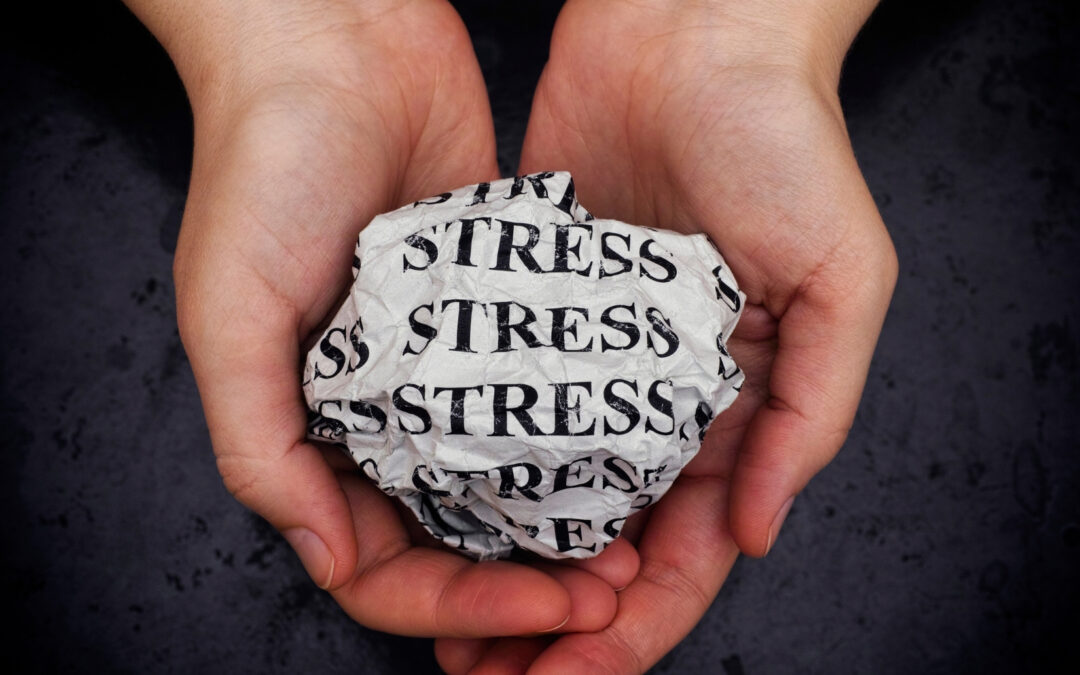Let’s talk about stress and muscular tension. This post will cover a little bit about what happens in your body with stress, the cascading response of your body’s chemistry, how it can lead to muscle tension, and how chronic stress and anxiety over time can lead to a host of chronic pain and debilitating issues. Let’s get started.
Stress and the Brain
First, let’s review a little bit about stress and what it does in the brain. There’s a little part in your brain called the amygdala, and one of its jobs is to look around and ask, “Is my environment ok and safe? Is there a threat or danger here?” Furthermore, research has shown that the amygdala stores memories associated with our experiences. If you have a negative experience and there’s fear involved, your brain is going to store that in the body somewhere, in a place that the amygdala has filed away. If that threat or negative experience returns, your body identifies the signal and responds. Your nervous system knows to send you into fight or flight because it recognizes the threat, whether it’s a person that is dangerous, a loud sound, the sight of an accident, etc.
The amygdala is the part of the brain that’s in charge of checking to see if there is a threat or safety. Then it’s in charge of beginning the shift of your nervous system into what might be the sympathetic nervous system. I say “might” because the responses to threat can vary. We have the well known fight or flight responses, but we also have freeze and fawn, which is another subject altogether.
Fight or Flight
Fight or flight is a sympathetic nervous system activation. This is like hitting the gas pedal on the nervous system. Your blood pressure increases, your heart rate increases, your breathing increases, your muscular contraction increases, inflammation increases, but at the same time, other things are shut down. Digestion shuts down, your immune function shuts down, your sex drive shuts down. All of these things that aren’t necessary for survival in the immediate moment will shut down. Then, the things that you might need for immediate survival, like muscular contraction, rapid breath, higher blood pressure to get more oxygen to your muscles so that you can fight or run for a long period of time, that’s all going to increase. That’s a sympathetic nervous system response.
Freeze
Freeze occurs with too much parasympathetic nervous system or an over abundance of parasympathetic response. Your brain is reading the threatening situation and thinks you’re not going to make it out so the best thing to do is to stop moving and be still. This is what we see in children who go through a lot of trauma, neglect or abuse. Over time, your brain sends you into a dissociative state where you’re emotionally kind of off somewhere else. Sometimes, endorphins get released in the brain. Of course, a traumatic experience is not pleasant, but the freeze response and endorphins make it manageable because your system is so freaked out about what’s happening and you’re not going to make it if you have to actually process what is happening in a very traumatic state. This is a survival response, just like fight and flight. A freeze state can be a big parasympathetic nervous system response, which does not increase muscular contraction. Fight or flight, however, really does.
Muscles and Threat
Fight or flight state in the brain and nervous system is going to send a message to your flexor muscles to contract. Now, the number one flexor muscle that instigates contraction at first is the psoas, which is that deep belly muscle that lives way up in your torso, goes through the respiratory diaphragm, goes up along the spine, front and sides of the spine, and comes down. It’s what pulls you in to a ball when you’re upset. When we go into this fight or flight state, the muscles that flex and bend the joints go into a state of contraction because your body is preparing for you to flee or kick some ass, basically. It’s preparing for you to be able to kick and punch. You might find yourself curling your hands up into fists when you’re angry because you want to punch, or you might find yourself wanting to curl up into a ball because that psoas is contracting as a result of the state of stress in your brain.
Now, unfortunately what happens over time is that our brains can get stuck in fight or flight or become what we call hypervigilant, which means they can quickly jump into the fight or flight state. It doesn’t take much to get upset. When we go into that hypervigilant state, one of the things that happens is we become easily triggered back into that fight or flight state, so we can hold a lot of tension in our muscles. It might be that the shoulders are lifting to get ready to punch, might get finger issues, wrist issues, shoulder pain, or neck pain, for sure. One of the groups of muscles that gets stuck in fight or flight is the scalenes in the neck, because when we go into stress breathing, those scalenes muscles activate to lift the ribs so that your lungs can take a bigger and fuller breath. All of this continual scalene contraction can lead to a whole host of problems, including aching between the shoulder blades, radiating numbness and tingling down the arms, chest pain. That can all happen from just some tension in those scalenes, neck muscles.
Chronic Tension & Pain
When we get into a traumatizing situation or a state of anxiety, which turns into chronic stress over time, it can lead to chronic pain in your body because you’re holding those flexors or holding a state of tension so you are “ready all the time”. Then, over a period of time, that tension gets stuck. In my world, we call that trigger points. They’re focal points of tension, and you can get tension or trigger points, in whole groups of muscles. As a matter of fact, that’s pretty much always how it happens. Not just one muscle becomes tense. The whole group gets overstimulated with too much tension in it. Over time, too much tension can lead to pain. Then over a longer time, it can lead to a lot of debilitation in the body.
I’ve been a body worker now for 29 years. I’ve had my hands on and around people’s bodies and tens of thousands of bodies, and one of the things I see is that people who have chronic debilitating conditions, at least all the people that I’ve worked with who have fibromyalgia or chronic pain, also have a history of trauma. They often have a history of some sort of traumatic neglect or abuse or traumatic experience and it has triggered in them a chronic inflammatory response and a chronic tension that leads to, for some, a constant or fluctuating state of pain in their bodies.
This is really fascinating to me to think about this connection of stress and muscular tension, muscular and body pain. Once we start looking at it , it becomes really necessary to learn how to regulate our nervous systems so we’re not stuck in a state of hyper vigilance, so that we don’t get stuck in a state of anxiety, and so we don’t experience chronic pain and dysfunction in our bodies because muscles being tense don’t just cause pain. They can also cause arthritis, bone issues, and joint problems.
Simple Solutions for Support
The simplest way that you can begin to unwind tension in your body and down regulate your nervous system out of a state of sympathetic nervous system response, or fight or flight is belly breathing.
- Take a couple of long, slow, deep belly breaths right now, downright regulate your nervous system and help yourself to release tension in the body.
- Take long, slow, deep belly breaths. You’re going to bring your hands to your belly so you can really feel your belly expand. Inhale in the belly, and exhale slowly. Then to it again.
If you’re feeling tension or pain in your body, one of the best things to do is to lay down on the floor on your back with your knees bent, your feet on the floor, or on a couch or something, and breathe deeply in your belly. The diaphragmatic breathing is a direct signal to your brain that you’re safe, because when you’re not safe, you stress breathe. With diaphragmatic breathe, when you breathe in the belly, you send a message directly into your nervous system that everything’s going to be okay, because you could not possibly breathe that way if you were being chased by a crazy dog or person.
That’s it for now. I hope this content has been helpful to you. Keep breathing into your belly! And, take care.





This information about how stress and our fight or flight reaction causes muscle tension and trigger points is so well worded and understandable. Also the relationship between trauma and conditions such as fibromyalgia is helpful. Thank you so much.
Very helpful and enlightening. Thank you.